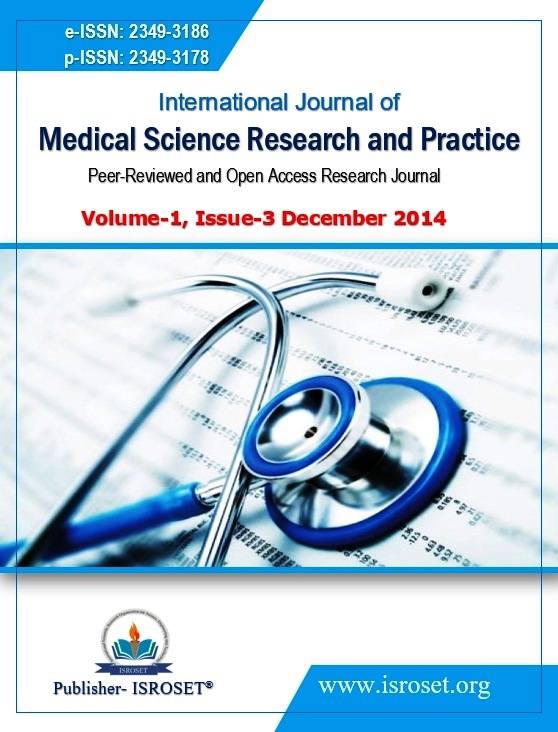Mobile phone surveillance and relationship between quantitative cultures and type of mobile device: A pilot study
Keywords:
Hospital Care Associated Infection (HCAI),, Colonisation, PolymicrobialAbstract
Aim-In this study an attempt was made to compare the mobile phone microbiota from health care workers among various departments and individuals from community not exposed to health care and correlate the quantum of bacterial load with the type of mobile phone.
Background-Inanimate object like mobile phones in the hospital environment are contaminated and are known to be considered as sources of Hospital Care Associated Infection (HCAI). It is also important to know the bacterial load on mobile phones and knowledge regarding mobile phone as source of nosocomial infection among health care workers (HCW) compared to people from community.
Material Methods-Study population and size included 100 healthcare workers from various departments of a tertiary care hospital and 50 individuals from a middle class community of East Delhi. Self structured questionnaire were distributed among the study population and quantitative culture from mobile phones were done.
Results-Total thirtee six of 100 mobile hand sets of health care workers (HCW) were colonized of which 6 were polymicrobial colonisation with average bacterial load of 2709. In the community based survey, 19 (38%) of the mobile handsets were colonized having average bacterial load of 2490 CFU per handset.
Conclusion-Mobile phones used by HCWs in daily practice may be a source of nosocomial infections in hospitals. There is a threat of spreading infection by mobile phone if not disinfected properly. This is similar to the importance of hand hygiene in preventing spread of infection. If use of mobile phones is imperative, then strict mobile friendly disinfection policies need to be formulated and implemented.
References
WHO: Global Patient Safety Challenge: 2005-2006 /World Alliance for Patient Safety. Available at:http://www.who.int/patientsafety/events/05/GPS C_Launch_ENGLISH_FINAL.pdf (Accessed March 17, 2009).
Rawia Ibrahim, Badr , Hatem Ibrahim Badr , Nabil Mansour Ali. Mobile phones and nosocomial infections. Int J Infect Control 2012; 8: 1-5.
Brady RR, Fraser SF, Dunlop MG, Paterson-Brown S, Gibb AP. Bacterial contamination of mobile communication devices in the operative environment. The Hospital Infection Society 2007; 10: 4-15.
Ulger F, Esen S, Dilek A, Yanik K, Gunaydin M, LeblebiciogluH. Are we aware how contaminated our mobile phones with nosocomial pathogens? Ann Clin Microbiol Antimicrob 2009; 8: 7.
Elkholy MT, Ewees IE. Mobile (cellular) phone contamination with nosocomial pathogens in Intensive care units. Med J Cairo Univ 2010; 2: 1-5.
Tambekar DH, Gulhane PB, Dahikar SG, Dudhane MN.Nosocomial hazards of doctor‘s mobile phones in hospitals. J Med Sci 2008; 8(1): 73-76.
Ramesh J, Carter AO, Campbell MH et al. Use of mobile phones by medical staff at Queen Elizabeth Hospital, Barbados: evidence for both benefit and harm. Journal of Hospital Infection 2008; 70: 160- 165.
Sadat-Ali M, Al-Omran AK, Azam Q, et al. Bacterial flora on cell phones of health care providers in a teaching institution. Am J Infect Control 2010; 38(5): 404-405.
Padma Srikanth, Ezhilarasan Rajaram, Suchithra Sudharsanam, et al. The mobile phone in a tropical setting emerging threat for infection control .Sri Ramachandra Journal of Medicine 2009;2:18-20.
Oguz Karabay,1 Esra Koçoglu,2 and Mustafa Tahtaci The role of mobile phones in the spread of bacteria associated with nosocomial infectionsJ Infect Developing Countries 2007; 1(1):72-73.
Downloads
Published
How to Cite
Issue
Section
License

This work is licensed under a Creative Commons Attribution 4.0 International License.
Authors contributing to this journal agree to publish their articles under the Creative Commons Attribution 4.0 International License, allowing third parties to share their work (copy, distribute, transmit) and to adapt it, under the condition that the authors are given credit and that in the event of reuse or distribution, the terms of this license are made clear.






